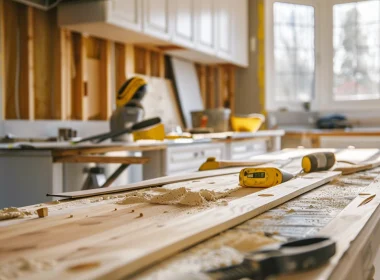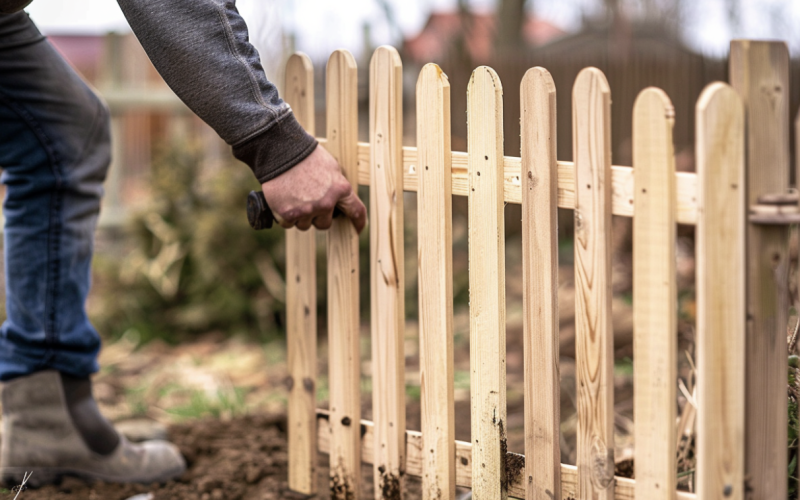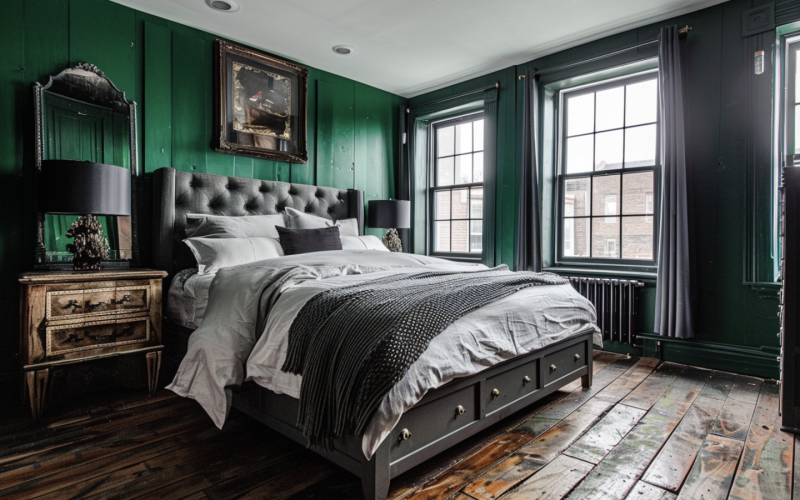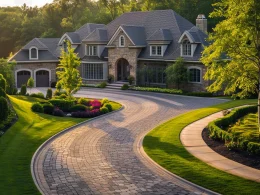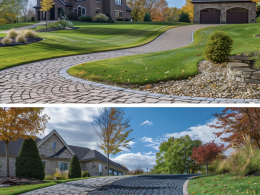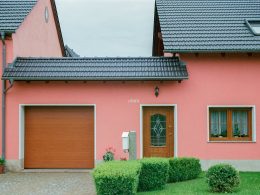Wooden pallet fences have become increasingly popular due to their rustic charm and eco-friendly nature.
However, many homeowners wonder about the durability and longevity of various pallet fences.
The lifespan of a pallet fence depends on several factors, such as the quality of the wood, weatherproofing, and proper maintenance.
In this article, we’ll explore the expected lifespan of a pallet fence and provide tips on extending its durability.
Understanding the factors that affect the longevity of your pallet fence can help you make informed decisions about materials, installation, and upkeep.
So, whether you’re considering a pallet fence for your property or already have one, keep reading to learn how to get the most out of your investment.
Average Lifespan of Pallet Fences
The average lifespan of an untreated pallet fence is typically 3-5 years. Understanding the expected lifespan can help plan and budget maintenance or replacement.
This information is crucial for homeowners considering pallet fences as a cost-effective and sustainable solution for their properties.
Factors Influencing Lifespan
Various factors, such as the type of wood used, weather exposure, and treatments applied, significantly influence the lifespan of a pallet fence.
Understanding these factors can help homeowners make informed decisions when building a pallet fence to ensure its longevity and durability.
1. Type of Wood Used
Hardwood comes from deciduous trees, while softwood is derived from coniferous trees. Hardwood is generally denser and more durable than softwood.
Due to its higher density and natural resistance to wear and decay, hardwood is a better choice for longer-lasting fences.
Softwood, while more affordable, may require more frequent maintenance and repairs.
When building a pallet fence, it is advisable to select hardwood pallets to enhance longevity and reduce maintenance needs.
This investment can pay off in the long run by minimizing the need for frequent replacements.
2. Weather Exposure
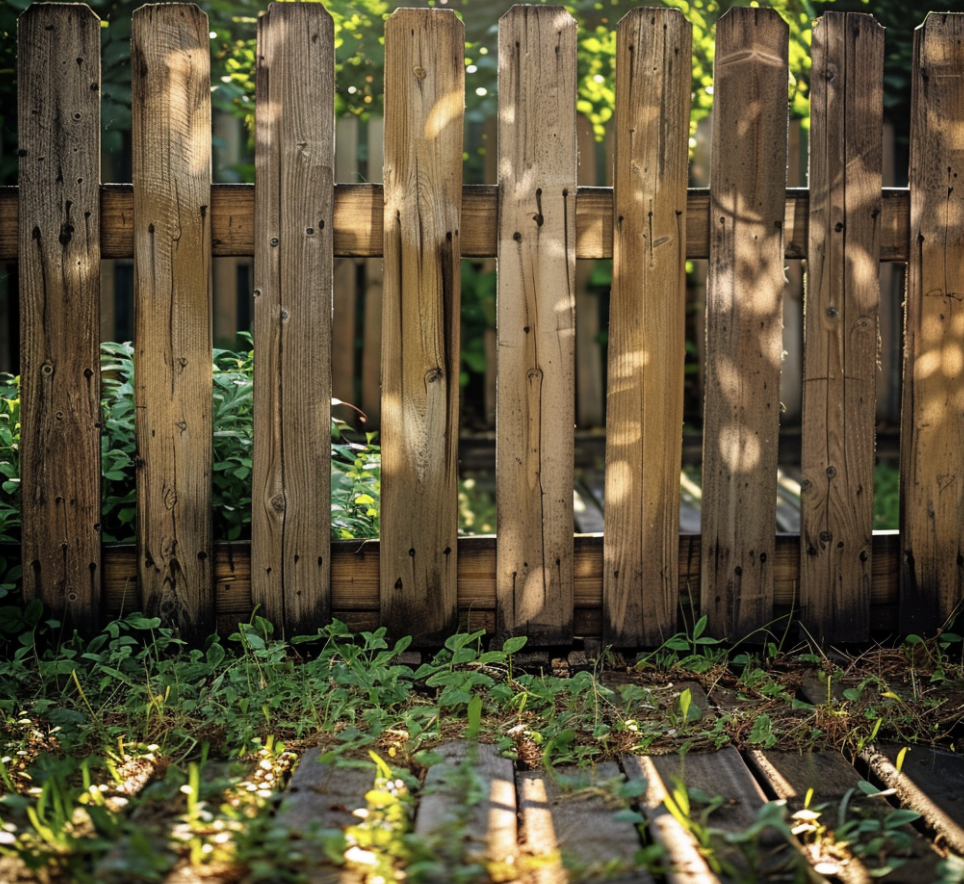
Pallet fences are exposed to various weather elements, such as moisture from rain and snow, UV rays from the sun, and temperature fluctuations.
These conditions can damage the wood over time. Exposure to moisture can cause the wood to swell and contract, leading to structural weaknesses.
UV rays can fade and degrade the wood’s surface, while extreme temperatures can cause cracking and splitting.
To minimize the impact of weather on your pallet fence, consider strategic placement away from direct sunlight or areas prone to excessive moisture.
Choose wood species that are naturally resistant to the climate in your region.
3. Treatment of Wood
Treating the wood used in your pallet fence is essential for extending its lifespan.
Treatments protect the wood from moisture, pests, and rot, common causes of deterioration in outdoor settings.
Common treatments for pallet fences include stains, preservatives, and sealants.
Stains add color while protecting the wood from UV rays. Preservatives help prevent insect infestations and rot, while sealants form a barrier against moisture.
To effectively apply treatments, ensure the wood is clean and dry before starting.
Follow the manufacturer’s instructions for application methods and drying times.
Reapply treatments as needed, typically every 1-3 years, depending on the product and environmental conditions.
Preparation of Pallets for Better Durability
Cleaning and Inspection
Before using pallets for your fence, thoroughly clean them and inspect for any signs of damage, such as cracks, splits, or insect infestations.
Remove any protruding nails or splinters that could cause injury or weaken the structure.
Treatment for Durability
Apply a wood preservative, sealant, or paint to protect the pallets from weather elements and pests.
This step will help prevent moisture damage, insect infestations, and premature decay.
Preparation Tips
When selecting pallets for your fence, choose those that are uniform in size and good condition.
Avoid pallets with excessive wear or damage, as they may compromise the fence’s strength and appearance.
Technique for Building the Fence

Setting Posts
Properly setting fence posts is essential for a stable foundation.
Dig post holes at least one-third the length of the post and secure them in place with concrete or stabilizers.
Ensure the posts are level and aligned before the concrete sets.
Attaching Pallets
Securely attach the pallets to the posts using appropriate fasteners, such as galvanized nails or screws.
Maintain consistent spacing between pallets and ensure they are level and aligned with each other. Pre-drilling holes can prevent the wood from splitting.
Tips for Enhancing Durability
Ground Clearance
To prevent rot and decay, maintain a minimum ground clearance of 3-6 inches between the bottom of the pallets and the soil.
This space allows for proper air circulation and prevents moisture from seeping into the wood.
Secure Attachment Techniques
Add cross braces or supports between the pallets and posts to reinforce the fence structure.
This step will help the fence withstand environmental stresses, such as strong winds or heavy rain, and maintain its stability over time.
Regular Inspections to Improve Longevity of Pallet Fence
Purpose of Inspections
Regular inspections are essential for the early detection of potential issues that, if left unaddressed, could lead to significant damage.
By identifying and resolving problems early, you can prevent costly repairs and extend the life of your fence.
What to Check
During inspections, look for signs of wear, damage from weather, pests, rot, and loose fasteners or broken planks.
Pay close attention to areas in direct contact with the ground or exposed to more severe weather conditions.
Frequency of Inspections
Inspecting your pallet fence at least seasonally and after severe weather events such as storms or heavy snowfall is recommended.
This will help you stay on top of necessary repairs or maintenance tasks.
Summing It Up
Understanding the lifespan of a pallet fence is crucial for homeowners looking for a cost-effective and eco-friendly fencing solution.
To significantly extend the life of your pallet fence, consider factors such as the type of wood, weather exposure, and proper construction techniques.
Regular maintenance, including inspections, ongoing treatments, and preventative measures, will ensure your fence remains durable and attractive for years.
Investing time and effort into building and maintaining your pallet fence will save you money in the long run and contribute to a more sustainable lifestyle.
So, whether you’re a DIY enthusiast or simply looking for a unique fencing option, a well-constructed and properly maintained pallet fence can be a valuable addition to your property.




